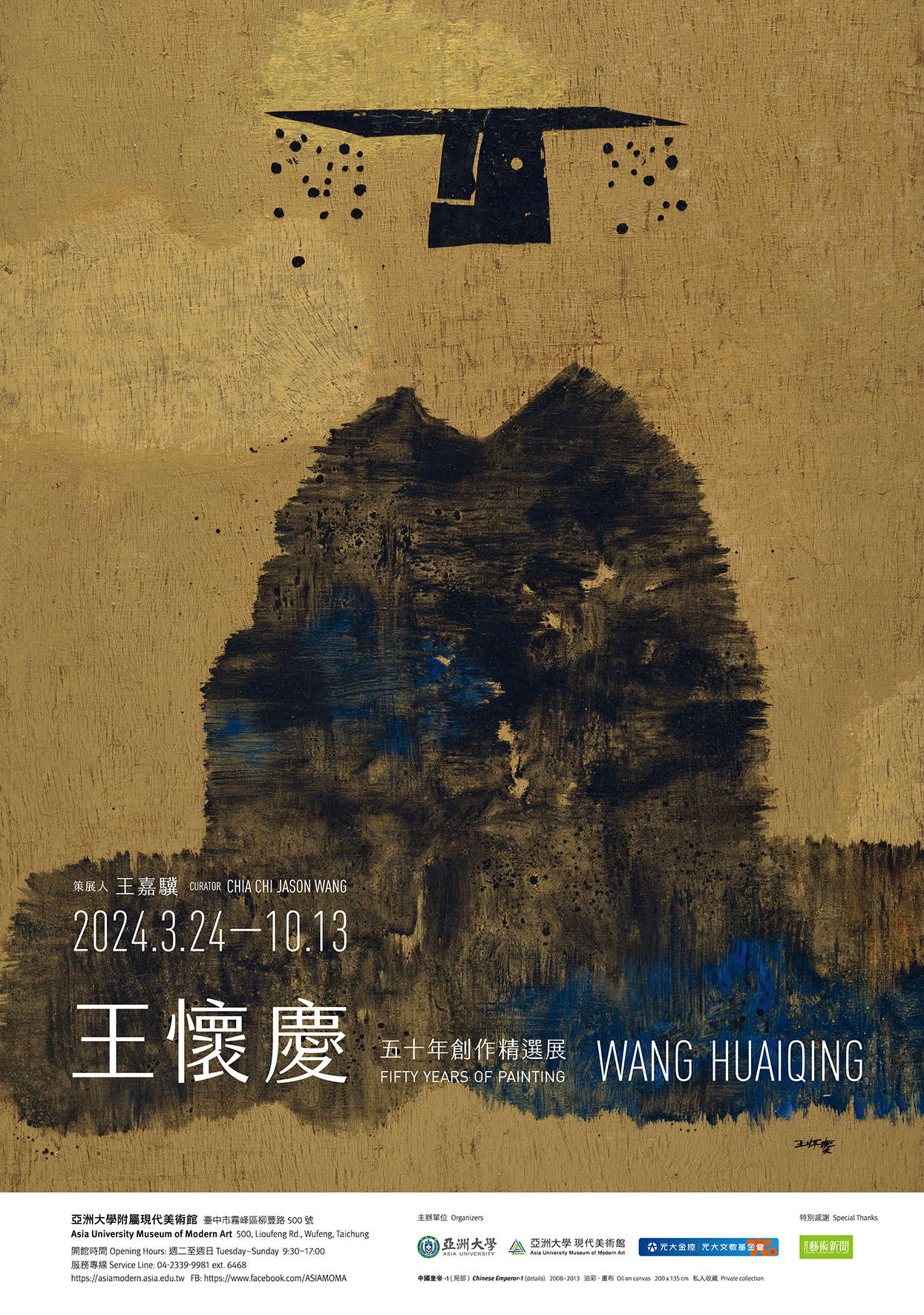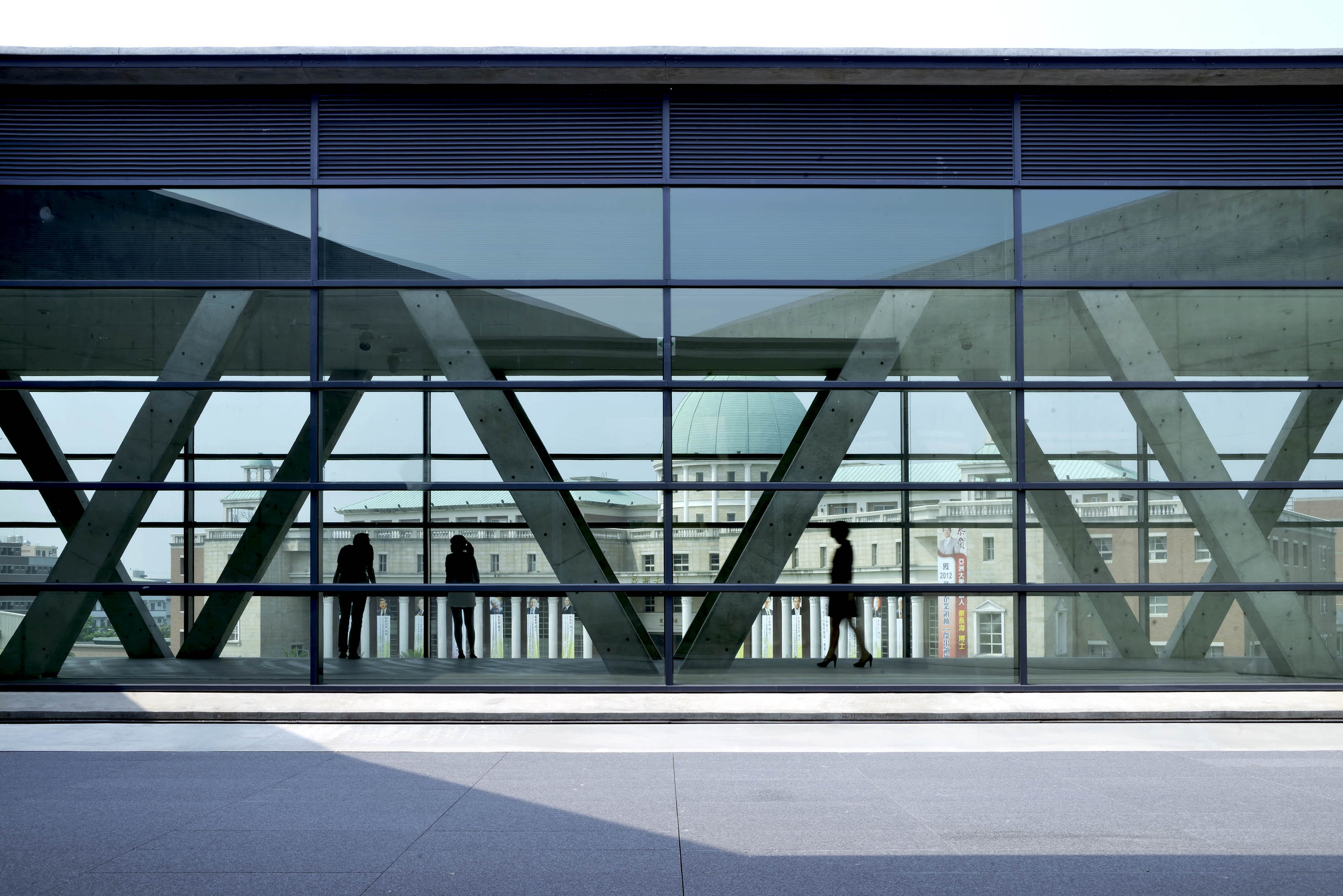王懷慶:五十年創作精選展
策展人:王嘉驥 (Chia Chi Jason Wang)
展覽導言
「王懷慶:五十年創作精選展」以中國藝術家王懷慶(1944 年生)1970 年代至近期的作品為展覽內容,精選他 50 年來具有代表性的作品。
“Wang Huaiqing: Fifty Years of Painting” cherry-picks the representative works of contemporary Chinese artist Wang Huaiqing (b. 1944) in his 50 years of practice from the 1970s to date.
王懷慶自幼生長於北京。1964年,考入中央工藝美術學院(今之北京清華大學美術學院)就讀。不久,文化大革命(1966-1976)爆發,學校師生被迫下鄉勞動改造;課業中斷,直到 1971 年畢業。1975 年至 1978 年,受分配擔任舞臺美術設計工作之餘,他已開始創作油畫,兼及連環畫與插圖製作。
Born in Beijing, Wang Huaiqing was admitted to the Central Academy of Arts and Crafts (Academy of Arts and Design, Tsinghua University, Beijing today) in 1964. Before long, the Cultural Revolution (1966-1976) erupted, during which students and faculties were forced to labor for reform in the countryside. Hence, all the studies were put on a halt, so Wang could not graduate until 1971. From 1975 to 1978, apart from the assigned work of stage design, he had begun working with oil paint, along with practices in serial pictures and book illustration.
1979 年,他再考入中央工藝美院研究生學程,進一步師事繪畫名家吳冠中 (1919-2010),深受肯定與賞識。1980 年代初期,王懷慶開始展露頭角,崛起於中國藝壇。前期,受惠於學院訓練,他的畫風以寫實主義取勝,擅長歷史和社會生活題材。1980 年代中期,他從中國江南地區,尤其是徽派黑瓦白牆的建築特色,獲得靈感,轉向不規則幾何形式的風景繪畫。
In 1979, he advanced to the graduate program of
進入 1990 年代,他從明式家具的木製榫卯結構,找到可資取用的造形資源。拆 解構造,再以視覺構成的方式,於畫面上重新拼組、聯結,或是並置、排列那些已經解離、散逸的木質構件——藉此手段,王懷慶確立了個人獨特的藝術風格。除了以油彩為媒介,他也創作水墨繪畫。同時,他更自覺地為自己的藝術注入文化意涵;藉有形且實存的現實物件,隱喻中國當代社會相對於歷史傳統的斷裂,賦予重建及再銜接的深刻寓意。王懷慶稍早已見的不規則幾何語彙,來到此一時期,更顯著地演變為一種介於抽象和具象之間的表現主義特色。
Entering the 1990s, he found inspirational formal resources from the wooden structure of mortise and tenon in the Ming-style furniture. Deconstructing the structure, the artist reassembled and joined visually over canvas or juxtaposed and arranged those wooden components that had deconstructed or scattered—Wang Huaiqing hence established an art style unique to his own. In addition to oil paint as his medium, he also worked with ink painting. In the meantime, he imbued cultural meanings into his art practice more consciously. Through tangible, real objects perceived from reality, he connoted the fractures of the contemporary society of China from its history and tradition as well as imparted profound senses of reconstruction and reconnection. The irregular geometrical lexicon observed in Wang’s earlier practice by then had evolved significantly into an expressionist trait betwixt abstractionism and figurativism.
不單單只是明式家具,王懷慶還從中國藝術與物質文化的歷史,深掘其他值得拓展的形式元素或母題,具體導入繪畫,表露個人的文化與歷史觀。不僅如此,他也嘗試在油畫當中,表現水墨的質感及審美趣味,亦灌注具有書法韻致的美學。反映傳統中國文化的精神及獨特性,這一直是王懷慶創作極為重要的精神內核。中國書畫史也是他觸手可及的重要形式源頭。《夜宴圖》系列 (1998-2006)和《中國皇帝》系列(2008-2016)是其中兩個顯著的案例,可以看出藝術家挪借畫史名作,予以創新和改造,亦融入個人哲思,激發跨越歷史時空的對話,形成別具一格的詠史或懷古的表現。
Beside the Ming-style furniture, Wang Huaiqing excavated other formal elements or motifs worthy of development from the histories of Chinese arts and material culture as well, vividly introducing them into painting and manifesting personal views on culture and history. Furthermore, he also experimented presenting the texture and beauty of ink in oil painting. Meanwhile, he also infused the aesthetics rich in the sense of Chinese calligraphy. Reflecting the spirit and specialty of the traditional Chinese culture had always been the crucial spiritual core in Wang’s practice. The history of Chinese calligraphy and painting was a vital formal source he could draw inspirations from as well.
王懷慶以創造性的托古和改制作為手段,搭起自己與傳統重新對接的通道。文人書畫所標榜的筆墨,經過他的揣摩與轉化,也以全新的方式,體現為個人獨特的藝術語風。與傳統十分不同的是,文人書法性的用筆大多屬於手腕與指間的運轉及調控,王懷慶將其力度與格局放大,延伸為巨大尺幅,改以身體的動勢,於畫面上或畫幅中行走。原本,可能是書法家運筆過程中,偶然留下的飛白墨跡;如今,王懷慶以全身性的運動,在超過真人大小的畫作裡,留下了有如天馬行空的視覺奇觀。簡而言之,他將書法的筆劃擴大,凝結為更富於當代面貌的抽象構成。
By means of creative reformation based on legacy, Wang Huaiqing built a bridge to reconnect himself with tradition. The brush-and-ink (bimo) known in the literati calligraphy and painting, after his study and transformation, were made into a whole new style unique to his artistic dialect. Rather distinct from the traditional approach, in which the calligraphic brush wielded by literati stressed on the operation and manipulation between the wrist and fingers, Wang amplified the force and scale for enormous pictures, shifting the practice to a promenade over canvas or within frame through bodily dynamic. The sporadic traces of swift stroke left by Chinese calligraphers in writing originally was elevated by Wang Huaiqing via whole-body movement into an unbridled visual wonder on paintings larger than life. In a nutshell, the artist magnified calligraphic strokes, crystalizing such into an abstract composition richer in the contemporary outlooks.
「王懷慶:五十年創作精選展」爬梳藝術家各個時期的特色和精華之作,尤其以臺灣各大機構與收藏家蓄聚多年的珍品,作為選件和邀請對象。因應亞洲大學現代美術館各個展廳的空間特質,總計展出的繪畫及立體作品近 50 件。透過此次展覽,期盼愛好當代藝術的社會大眾,得以一窺王懷慶藝術生涯的發展及其堂奧。
“Wang Huaiqing: Fifty Years of Painting” combs through the works of characteristics and highlights across the artist’s various stages, featuring especially the cherished pieces from the collections of major institutions and collectors in Taiwan that have been acquired or collected for years as the selected and invited works. In response to the spatial attributes of the galleries at Asia University Museum of Modern Art, nearly 50 pieces of paintings and sculptural works in total are presented. Through this exhibition, we endeavor to offer the crowd fond of contemporary art a glimpse at the artistic locus and quintessence of Wang Huaiqing.



